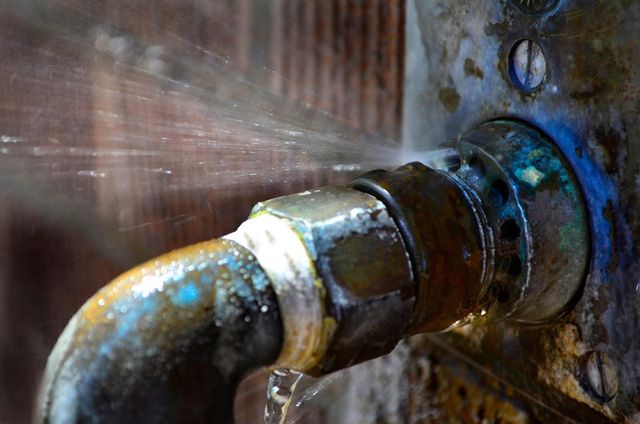How to Check If Your House Has a Concealed Leakage
How to Check If Your House Has a Concealed Leakage
Blog Article
What're your thoughts on Leaking water lines?

Early discovery of dripping water lines can alleviate a prospective disaster. Apart from conserving you money, it will certainly decrease the stress and irritation. The moment you find a leak, calling your plumber for fixings is the very best service. Some small water leaks may not be visible. If you can not identify it with your naked eyes, right here are some hacks that aid.
1. Examine the Water Meter
Every house has a water meter. Checking it is a surefire way that helps you discover leakages. For beginners, shut off all the water sources. Guarantee no person will certainly flush, make use of the tap, shower, run the washing maker or dish washer. From there, go to the meter as well as watch if it will certainly change. Given that no person is utilizing it, there should be no motions. If it moves, that suggests a fast-moving leakage. Likewise, if you identify no changes, wait an hour or 2 as well as examine back once again. This indicates you may have a slow-moving leak that could also be underground.
2. Examine Water Usage
If you detect sudden adjustments, despite your usage being the very same, it implies that you have leakages in your plumbing system. An abrupt spike in your bill indicates a fast-moving leak.
A stable boost every month, even with the exact same routines, reveals you have a slow-moving leakage that's likewise slowly intensifying. Call a plumber to extensively examine your building, specifically if you really feel a warm area on your flooring with piping beneath.
3. Do a Food Coloring Test
When it comes to water usage, 30% comes from bathrooms. If the shade somehow infiltrates your dish throughout that time without flushing, there's a leakage between the container and dish.
4. Asses Outside Lines
Don't neglect to check your outdoor water lines also. Test spigots by connecting a garden hose pipe. Must water leak out of the connection, you have a loose rubber gasket. Change this as well as make certain all links are limited. If you've got an automatic sprinkler, it will certainly help get it expertly took a look at and also kept each year. One little leak can lose tons of water as well as increase your water bill.
5. Analyze the situation as well as check
Home owners need to make it a habit to examine under the sink counters and also even inside cabinets for any bad odor or mold and mildew development. These two red flags indicate a leak so punctual interest is needed. Doing routine inspections, also bi-annually, can save you from a significant issue.
Check for stainings as well as deteriorating as many appliances and also pipes have a life expectations. If you think dripping water lines in your plumbing system, don't wait for it to intensify.
Early detection of leaking water lines can alleviate a potential catastrophe. Some little water leakages may not be noticeable. Checking it is a guaranteed method that aids you uncover leakages. One small leak can lose tons of water and also surge your water expense.
If you believe leaking water lines in your plumbing system, don't wait for it to escalate.
WARNING SIGNS OF WATER LEAKAGE BEHIND THE WALL
PERSISTENT MUSTY ODORS
As water slowly drips from a leaky pipe inside the wall, flooring and sheetrock stay damp and develop an odor similar to wet cardboard. It generates a musty smell that can help you find hidden leaks.
MOLD IN UNUSUAL AREAS
Mold usually grows in wet areas like kitchens, baths and laundry rooms. If you spot the stuff on walls or baseboards in other rooms of the house, it’s a good indicator of undetected water leaks.
STAINS THAT GROW
When mold thrives around a leaky pipe, it sometimes takes hold on the inside surface of the affected wall. A growing stain on otherwise clean sheetrock is often your sign of a hidden plumbing problem.
PEELING OR BUBBLING WALLPAPER / PAINT
This clue is easy to miss in rooms that don’t get much use. When you see wallpaper separating along seams or paint bubbling or flaking off the wall, blame sheetrock that stays wet because of an undetected leak.
BUCKLED CEILINGS AND STAINED FLOORS
If ceilings or floors in bathrooms, kitchens or laundry areas develop structural problems, don’t rule out constant damp inside the walls. Wet sheetrock can affect adjacent framing, flooring and ceilings.
https://www.servicemasterbyzaba.com/blog/how-to-detect-water-leakage-in-walls/

Hopefully you enjoyed our section about Hacks to detect leaks. Many thanks for taking time to read our blog post. Are you aware of another person who is intrigued by the subject? Why not promote it. I cherish reading our article about Locating water leaks.
Report this page